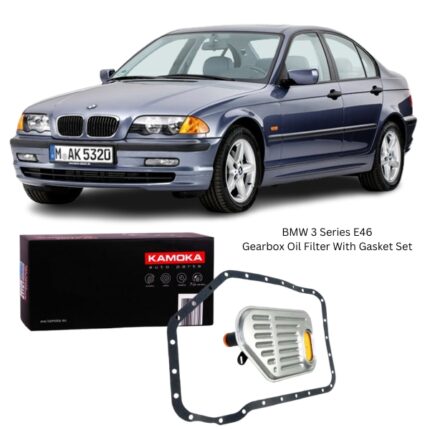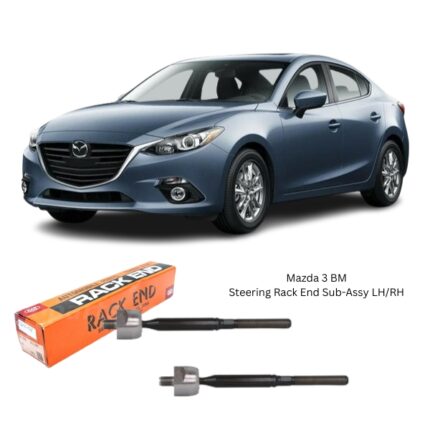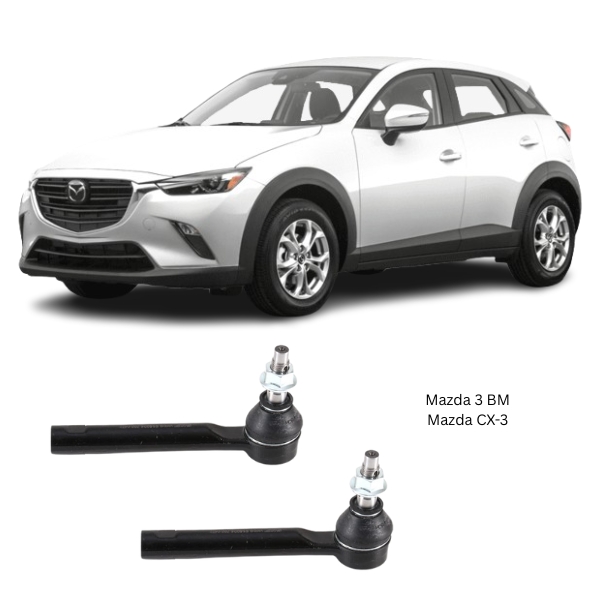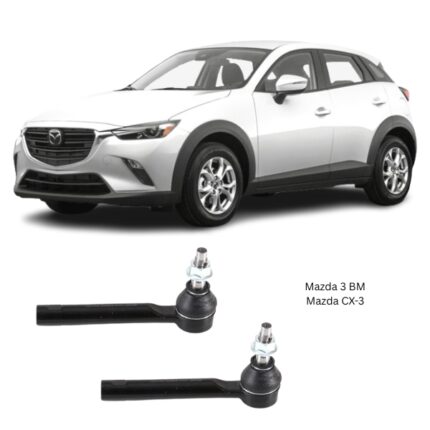Get Mazda CX-3 Tie Rod End Assy SE-M031 in Kenya
The Tie Rod End Assembly is a fundamental component in a vehicle’s steering system, providing the mechanical connection between the steering rack and the steering knuckle on each front wheel. It plays a pivotal role in translating the driver’s input from the steering wheel into the directional movement of the vehicle. Without it, accurate steering response and front-wheel alignment would be impossible.
The assembly typically consists of:
-
An inner tie rod (in some configurations),
-
An outer tie rod end (the ball-jointed end that connects to the steering knuckle),
-
A ball stud with a tapered shaft,
-
A protective dust boot, and
-
In some vehicles, locking nuts or washers to hold the assembly securely.
This component ensures precise steering input, promotes uniform tire wear, and contributes to overall vehicle safety and handling performance.
Function and Role in the Steering System
The tie rod end is the final connecting piece of the rack-and-pinion steering linkage that links the steering gear mechanism to the wheel hub assembly. Its main responsibilities include:
-
Transmitting steering input from the center link or rack gear to the steering knuckle,
-
Allowing pivot movement necessary for wheel articulation during turning and suspension travel,
-
Maintaining wheel alignment during motion and road shock absorption,
-
Absorbing road irregularities and reducing the transfer of vibrations to the steering wheel.
By maintaining a solid connection and allowing controlled flex and rotation through its ball joint design, the tie rod end supports smooth and predictable steering.
Construction and Design
A typical tie rod end assembly consists of the following components:
-
Ball Stud: The core of the tie rod end, this hardened metal stud features a spherical ball and tapered threaded shaft that fits securely into the steering knuckle. The taper ensures a tight press-fit that resists loosening over time.
-
Socket Housing: The socket encapsulates the ball joint, allowing the stud to rotate and articulate within a set range. It’s precision-machined for a tight yet flexible fit.
-
Grease Fitting (Zerk) (in some models): Allows for periodic lubrication to extend service life.
-
Dust Boot: A rubber or thermoplastic boot that seals the joint, protecting it from dirt, moisture, and road salt. A failed boot leads to rapid joint wear.
-
Hex Nut / Castle Nut with Cotter Pin: Secures the tie rod end to the steering knuckle. The cotter pin prevents unintentional loosening.
-
Locking Nut (on the inner threads): Used during alignment and installation to secure the position of the tie rod on the inner steering link.
Materials used typically include forged steel, hardened alloy steel for the stud, and wear-resistant polymers for socket liners. The design must withstand extreme tension, compression, and torsional forces.
Types of Tie Rod End Assemblies
-
Outer Tie Rod Ends: These connect directly to the steering knuckle. They feature the ball-and-socket joint for multi-axis movement.
-
Inner Tie Rods: These connect the outer tie rod to the steering rack. In rack-and-pinion systems, the inner tie rod threads into the rack and links to the outer tie rod.
-
Adjustable Tie Rods: Found in some performance or off-road applications where custom alignment or length adjustment is needed.
-
Fixed Tie Rod Ends: Standard factory-fit parts designed for specific vehicle models with non-adjustable dimensions.
The assembly you choose must match the exact specifications of the vehicle’s suspension geometry, including thread pitch, ball stud size, and taper angle.
Applications and Compatibility
Tie rod end assemblies are found on nearly every front-wheel drive, rear-wheel drive, and four-wheel drive vehicle, including passenger cars, SUVs, pickups, commercial vehicles, and trucks. They are engineered to vehicle-specific specifications and vary depending on:
-
Steering system type (rack and pinion or recirculating ball),
-
Suspension design (MacPherson strut, double wishbone, etc.),
-
Drive orientation, and
-
Wheel alignment parameters (toe angle, caster, and camber influence).
Proper compatibility is critical. Using an incorrect tie rod end can compromise steering precision and lead to dangerous handling characteristics.
Signs of Wear or Failure
Over time, tie rod ends wear out due to road stress, vibrations, temperature fluctuations, and contamination from dust or water ingress.
Common signs of a failing tie rod end include:
-
Loose or “wandering” steering – Vehicle doesn’t maintain a straight line.
-
Uneven or excessive tire wear, especially on the inside or outside edges.
-
Clunking or knocking noises when turning or going over bumps.
-
Steering wheel vibration, especially at speed.
-
Poor or delayed steering response.
-
Visible play in the tie rod when moved by hand during inspection.
Driving with worn tie rods can lead to dangerous steering failure and unpredictable vehicle handling.
Replacement and Installation
Tie rod end replacement is a moderate-difficulty mechanical task typically performed during steering system repair, alignment correction, or after accident damage.
Basic steps include:
-
Lift the vehicle and remove the front wheel.
-
Loosen the lock nut securing the tie rod to the inner rod.
-
Detach the tie rod end from the steering knuckle using a tie rod puller or ball joint separator.
-
Unscrew the old tie rod end from the inner tie rod (count the turns to maintain alignment).
-
Install the new tie rod end, matching the original length or position.
-
Tighten the jam nut and secure the tie rod to the steering knuckle.
-
Reinstall wheel and torque to spec.
-
Perform a wheel alignment – essential to avoid uneven tire wear and restore correct handling.
It’s strongly recommended to replace tie rods in pairs (left and right) for balance and consistent response.
Maintenance and Longevity
Most modern tie rod ends are maintenance-free and sealed for life. However, older or heavy-duty models with grease fittings should be lubricated during every oil change or major service.
Lifespan of tie rod ends can range between 80,000 km to 160,000 km depending on:
-
Road conditions (potholes and unpaved roads accelerate wear),
-
Driving habits,
-
Vehicle weight and load usage,
-
Frequency of off-road or high-performance driving.
Regular inspections during tire rotations or suspension checks help catch wear early.
Why Choose Quality Tie Rod End Assemblies?
Using a high-quality tie rod end offers:
-
Superior steering precision and safety,
-
Long-lasting performance due to high-grade materials and advanced engineering,
-
Corrosion resistance from coated surfaces and rust-resistant hardware,
-
Ease of installation, especially with pre-installed grease and hardware,
-
Better protection against moisture, dust, and road contaminants.
Brands like TRW, MOOG, Febi Bilstein, Lemförder, ACDelco, and 555 Sankei are known for OE-quality tie rod components.
Follow us on Facebook for more parts.





Reviews
Clear filtersThere are no reviews yet.